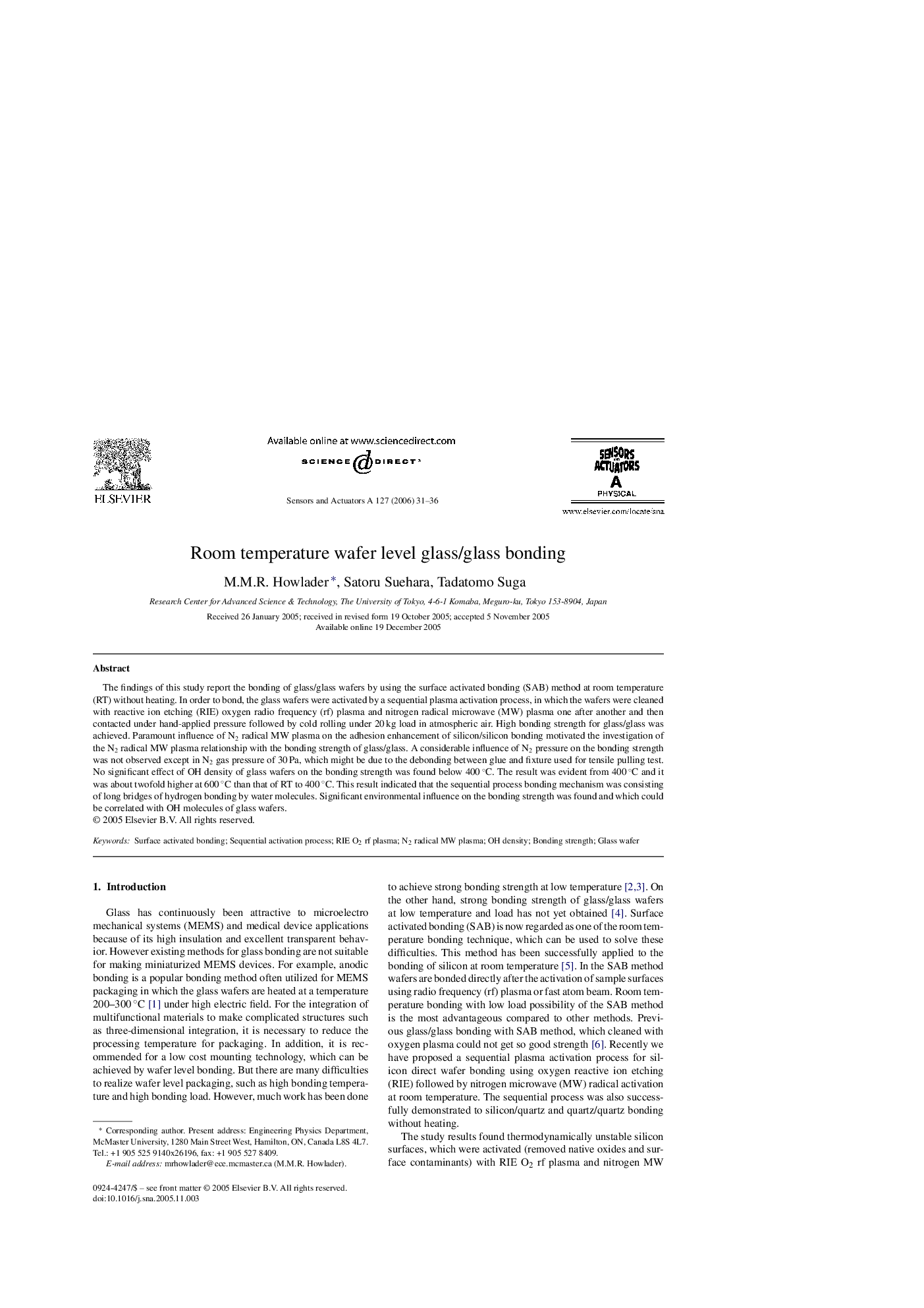| Article ID | Journal | Published Year | Pages | File Type |
|---|---|---|---|---|
| 10409384 | Sensors and Actuators A: Physical | 2006 | 6 Pages |
Abstract
The findings of this study report the bonding of glass/glass wafers by using the surface activated bonding (SAB) method at room temperature (RT) without heating. In order to bond, the glass wafers were activated by a sequential plasma activation process, in which the wafers were cleaned with reactive ion etching (RIE) oxygen radio frequency (rf) plasma and nitrogen radical microwave (MW) plasma one after another and then contacted under hand-applied pressure followed by cold rolling under 20 kg load in atmospheric air. High bonding strength for glass/glass was achieved. Paramount influence of N2 radical MW plasma on the adhesion enhancement of silicon/silicon bonding motivated the investigation of the N2 radical MW plasma relationship with the bonding strength of glass/glass. A considerable influence of N2 pressure on the bonding strength was not observed except in N2 gas pressure of 30 Pa, which might be due to the debonding between glue and fixture used for tensile pulling test. No significant effect of OH density of glass wafers on the bonding strength was found below 400 °C. The result was evident from 400 °C and it was about twofold higher at 600 °C than that of RT to 400 °C. This result indicated that the sequential process bonding mechanism was consisting of long bridges of hydrogen bonding by water molecules. Significant environmental influence on the bonding strength was found and which could be correlated with OH molecules of glass wafers.
Related Topics
Physical Sciences and Engineering
Chemistry
Electrochemistry
Authors
M.M.R. Howlader, Satoru Suehara, Tadatomo Suga,
